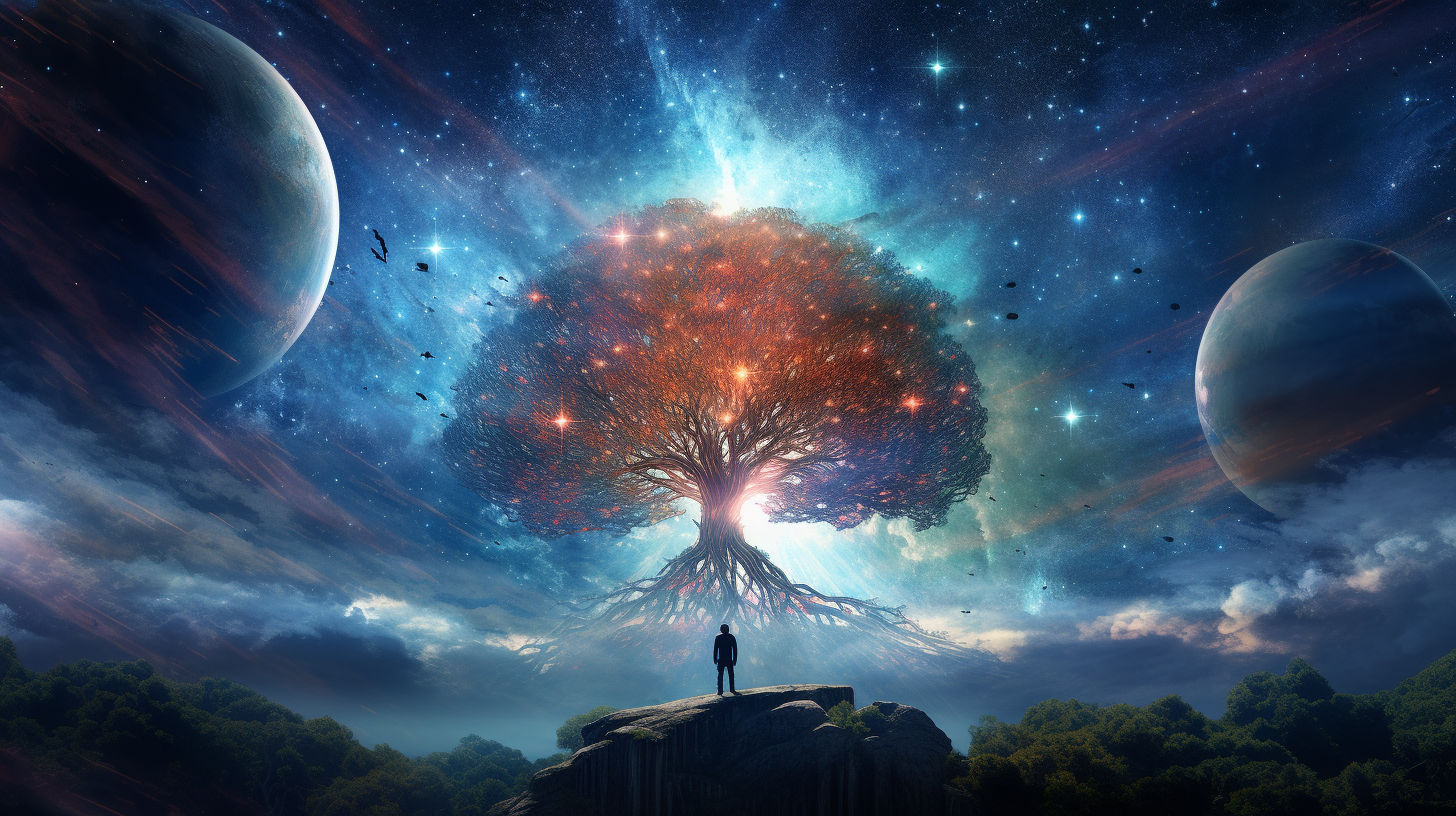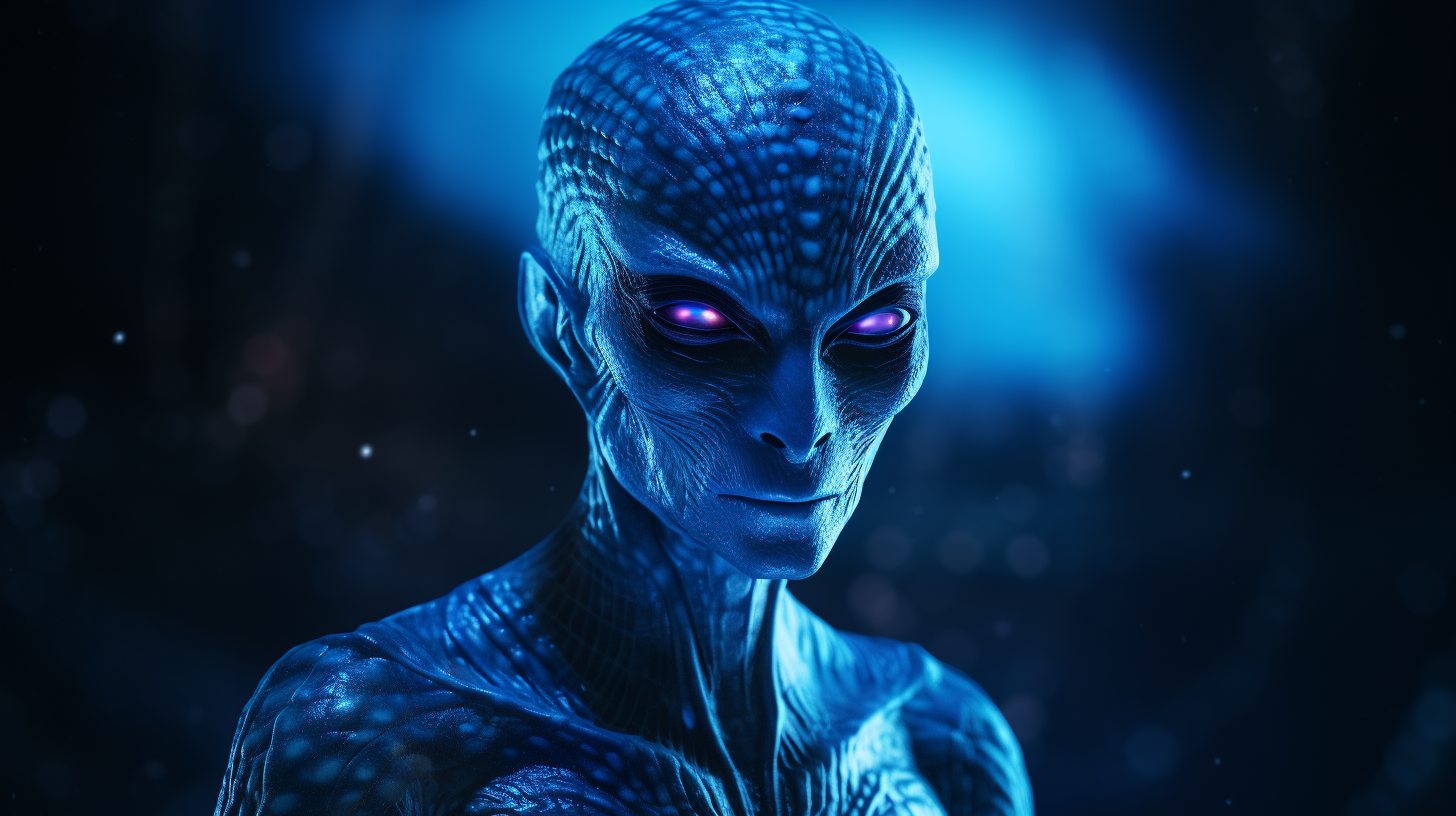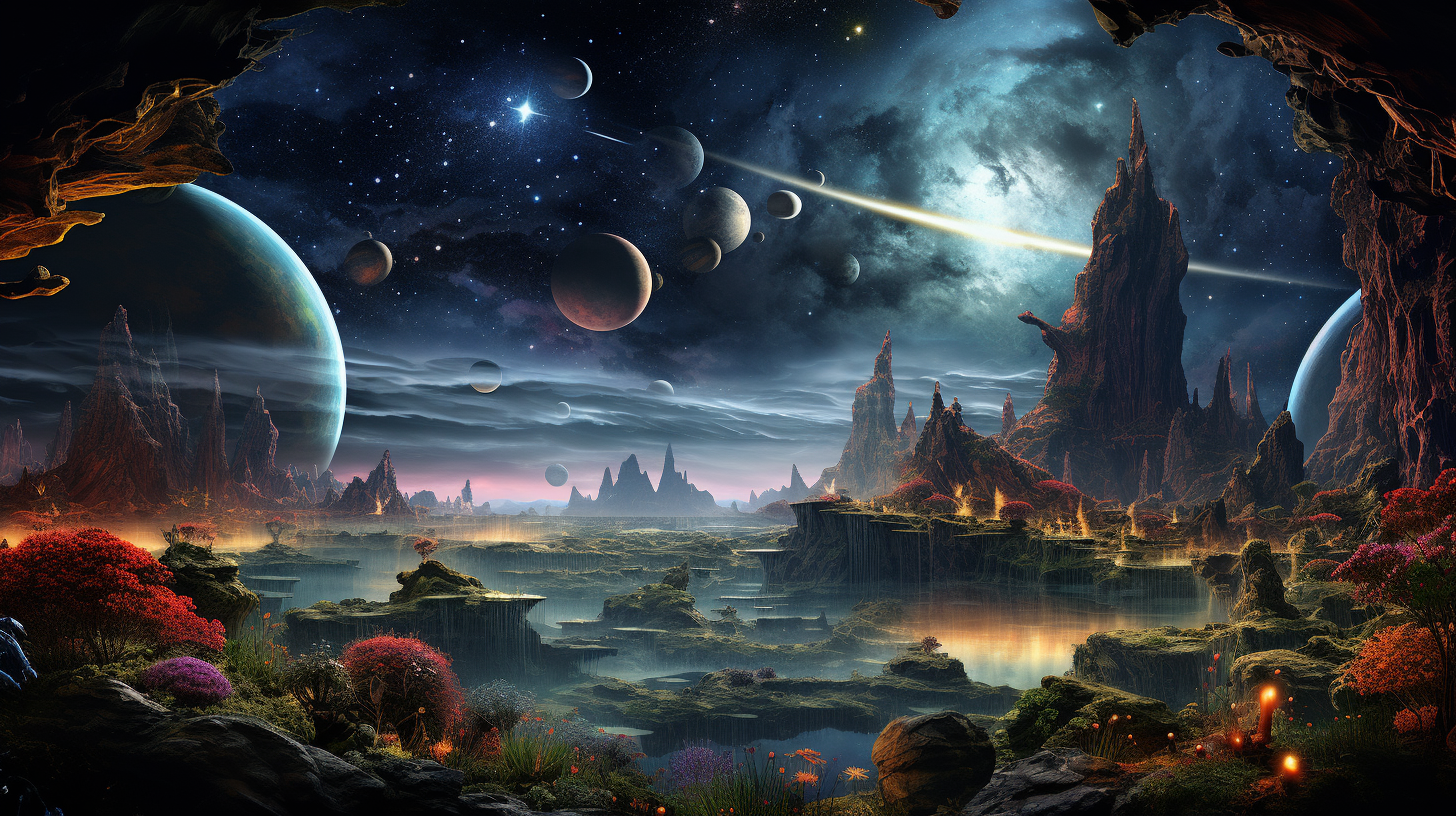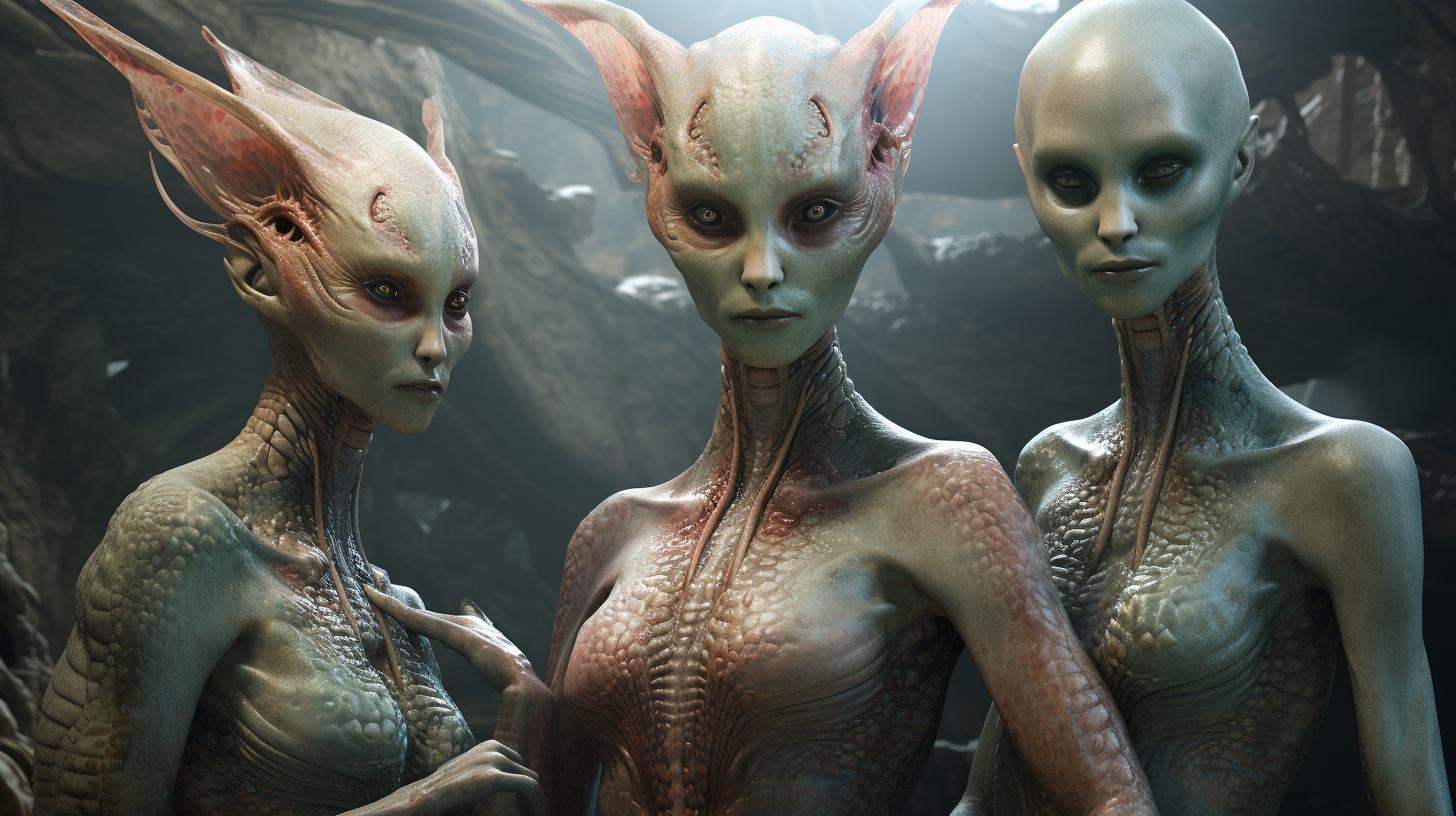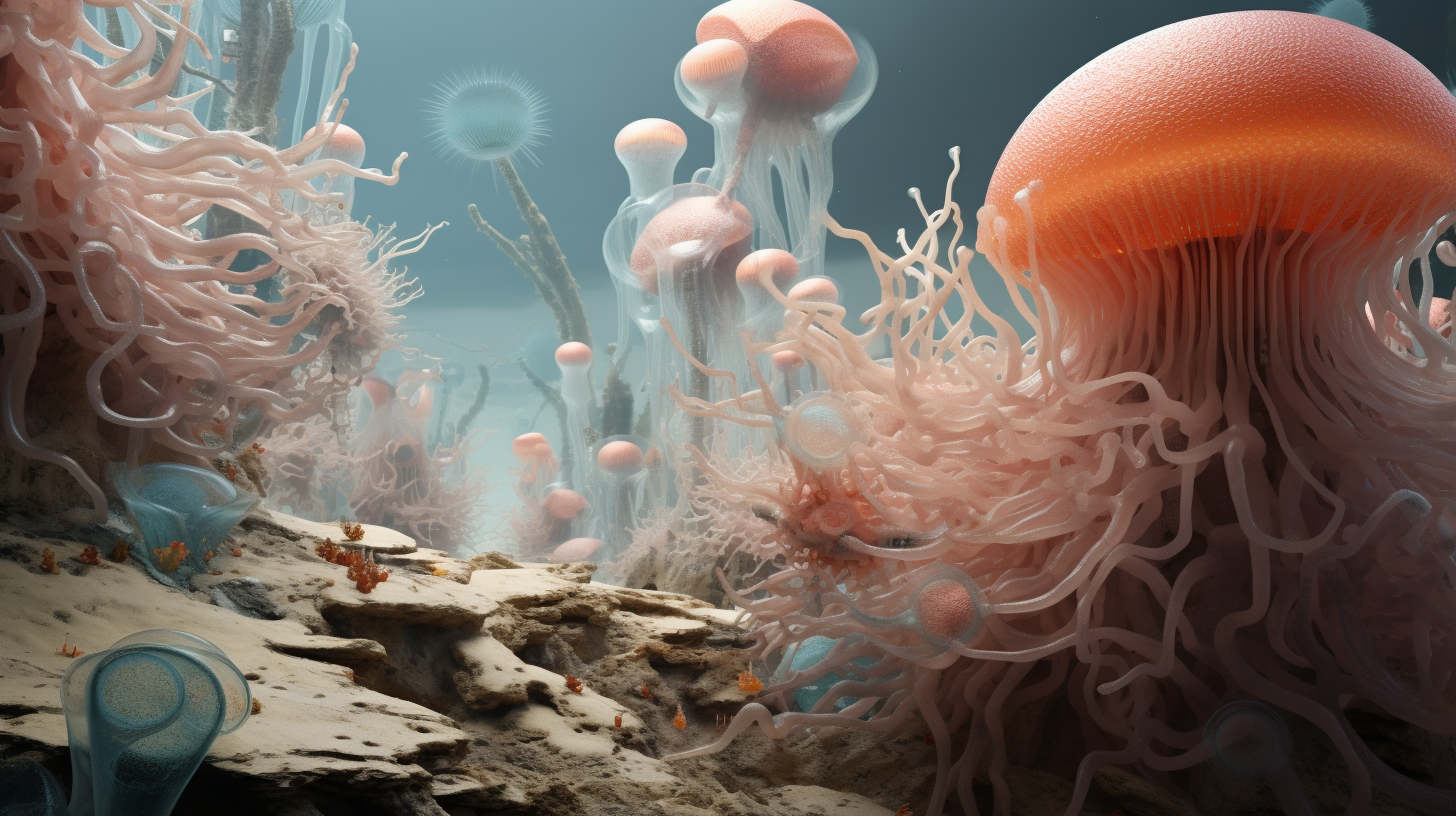Insectoid Aliens
Insectoid aliens are an elusive and captivating species, embodying the quintessential ‘otherness’ that defines the idea of an alien. Their depiction ranges from the malevolent, grotesque invaders, to complex sentient beings often seen during spiritual journeys, challenging our understanding of life and intelligence.
Physical and Social Characteristics
Insectoid aliens often possess a blend of human and insect characteristics, typically drawing from the morphology of ants and other eusocial insects.
This amalgamation provokes the exploration of collectivism versus individualism, as these creatures are frequently cast as the antithesis of human society, with their hive minds and communal living, which obviously pose a stark contrast to our individualistic tendencies.
Mantis-Like Features in Insectoid Aliens
Insectoid aliens are frequently visualized with mantis-like features, which adds a layer of complexity to their already intriguing form.
The mantis, with its elongated limbs, triangular head, and large, multifaceted eyes, provides a template that is at once alien and eerily familiar. This resemblance to the praying mantis not only enhances their otherworldly appearance but also imbues them with a sense of foreboding and grace that is characteristic of these predators.
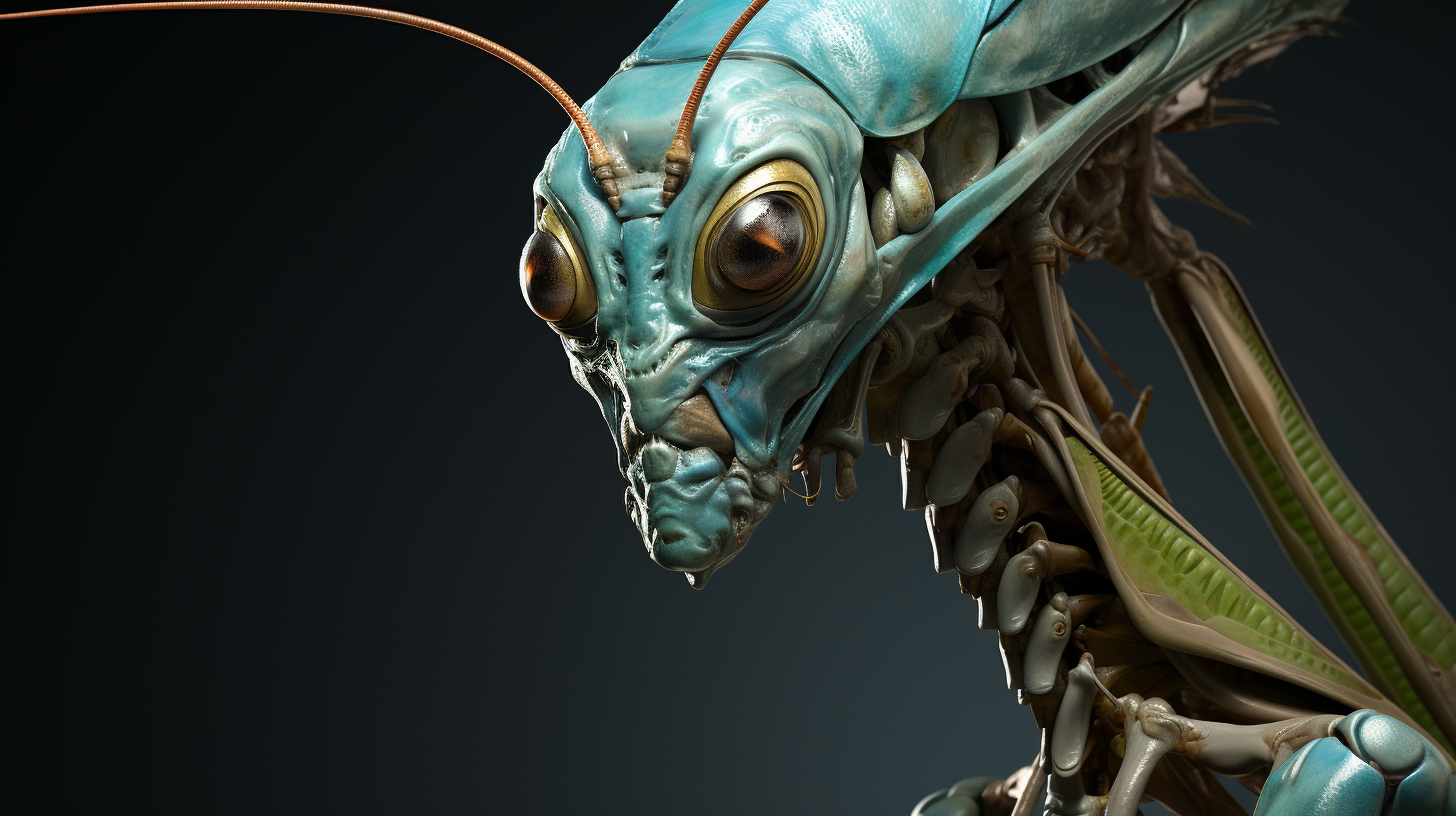
Symbolism of Mantis-Like Aliens
In many narratives, the mantis-like appearance of these aliens also symbolizes a predatory and mysterious nature. The praying mantis is often associated with stillness and patience, qualities that are lent to their alien counterparts, suggesting a being that is calculating and formidable.
This can be used to evoke a sense of danger or, alternatively, a sense of wisdom and ancient knowledge.
Where Do They Come From?
In the context of real encounters, insectoid aliens are largely rooted in the realm of UFO sightings, anecdotal reports, and speculative theories, as not too much is known about them. However, there are several recurring themes in these reports:
UFO Sightings and Abduction Reports
Some individuals who claim to have experienced UFO sightings or alien abductions report encountering beings that resemble insectoid aliens. These beings are often described as having features similar to insects, such as large, black eyes, exoskeleton-like bodies, and sometimes, mantis-like appearances.
Remote or Secluded Areas
Many of these alleged encounters with insectoid aliens occur in remote or secluded areas. Witnesses often report seeing these beings either emerging from unidentified flying objects or in natural settings away from urban centers.
Spiritual or Mystical Experiences
Some individuals interpret their encounters with insectoid aliens as spiritual or mystical experiences. They often describe these encounters as transformative, sometimes involving messages or insights about the universe or human consciousness.
Speculative Theories
There are various speculative theories about insectoid aliens, ranging from them being interdimensional beings to advanced extraterrestrial civilizations studying humans. These theories are often discussed in the context of paranormal research and speculative ufology.
Duality of Nature
Despite their common portrayal as adversaries, insectoid aliens are not universally antagonistic. Some narratives present them as peaceful, harmonious entities, which starkly contrasts with the imperialistic drives of their more aggressive counterparts.
This duality allows for a nuanced examination of the alien ‘other’—from feared enemies to misunderstood entities that challenge our preconceptions.
Contrast with Human Individualism
The mantis-like insectoid aliens, with their hive minds and communal living, stand in stark contrast to human society, which values individual thought and personal achievement. This contrast is a common trope in science fiction, serving as a critique of both ends of the societal spectrum. The insectoid aliens’ collectivism is shown to have advantages in terms of unity and efficiency, but at the cost of personal identity and emotional depth.
Metaphors for Ecophobia
The symbiotic relationships within insectoid societies often mirror our ecophobic tendencies, serving as metaphors for our own fears of the natural world. The intricate dynamics of their hives and colonies provide fertile ground for allegories of environmental interconnectivity and the consequences of its disruption.
Insectoid Aliens in UFO Culture
UFO culture and reported encounters with insect-like beings add a layer of intrigue to the insectoid alien trope. While such sightings are scarce, they fuel speculation about the possibility of insect evolution taking a path toward intelligence and space exploration.
Depictions in Popular Culture
Insectoid aliens have been a popular trope in science fiction, with numerous depictions across literature, film, and television. Here are some notable examples:
Starship Troopers: In Robert A. Heinlein’s novel, the antagonistic “Arachnids” or “Bugs” are depicted as hostile insect aliens. This novel is considered a founding classic of military science fiction and has greatly influenced the portrayal of insectoid aliens in the genre.
Ender’s Game series: Orson Scott Card’s series features the “buggers,” another example of insectoid aliens. These creatures serve as the primary antagonists in the series.
Alien (1979): Ridley Scott’s film features the iconic Xenomorph, a parasitic wasp-inspired creature. The Xenomorph’s life cycle, particularly its grisly chest-bursting stage, is one of the most memorable aspects of the film.
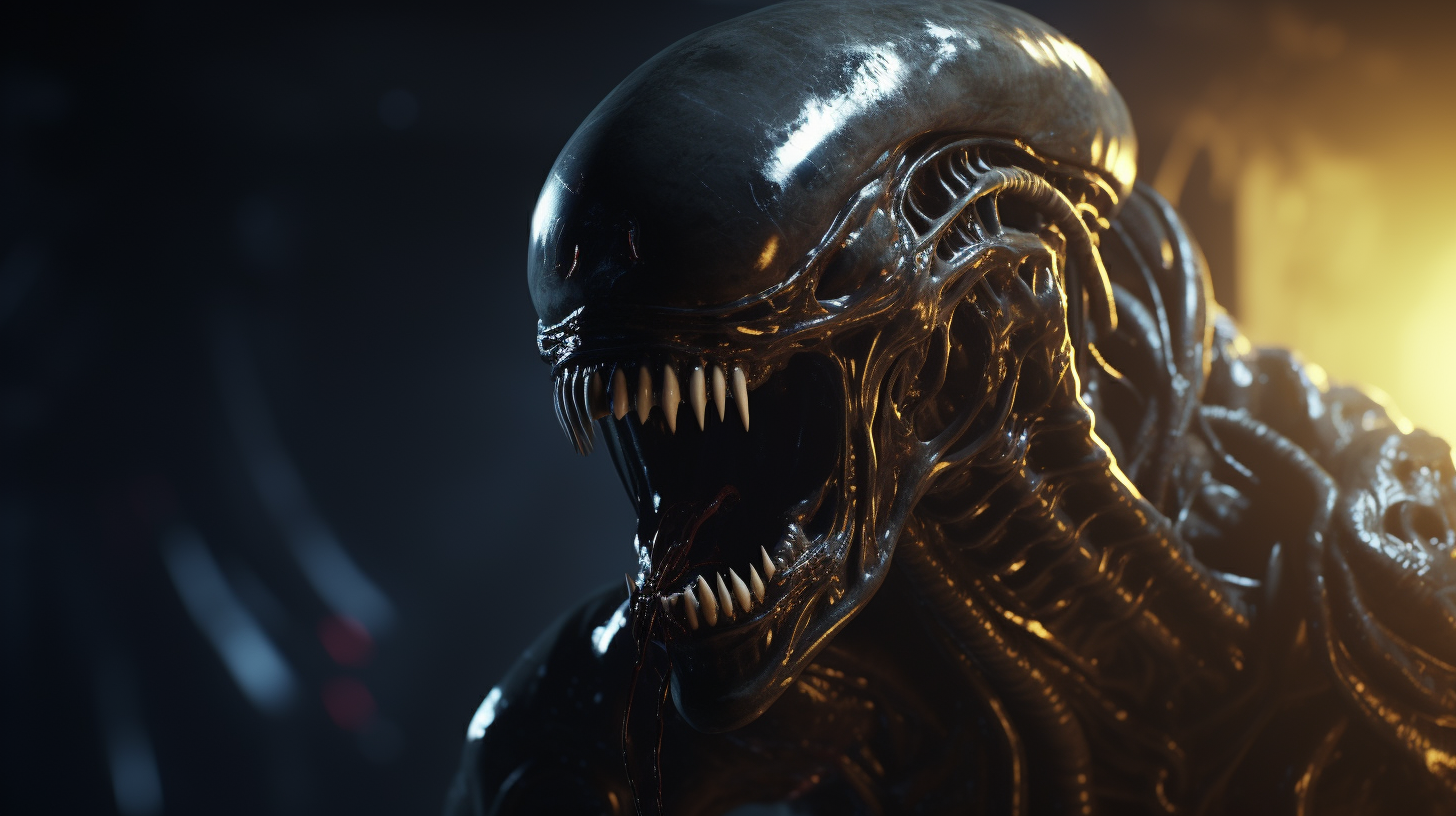
Star Wars: The franchise features several insectoid species. For instance, the Geonosians, who resemble giant humanoid locusts and live in immense earthen hives, are prominent villains in “Attack of the Clones.” The franchise also includes Zuckuss, a bounty hunter from an insectoid species known as the Gand, and the Killiks, giant, sapient ants from the Dark Nest Trilogy.
Futurama: The animated series features the Cygnoids, a race of insectoid aliens.
These depictions of insectoid aliens in science fiction often explore themes of fear, otherness, and the potential for communication and empathy with radically different life forms. They also provide a rich source of inspiration for creating a sense of the alien that is rooted in believable biological science.
Scientific Theories and Panspermia
Scientific theories suggesting that life on Earth might have originated from extraterrestrial microorganisms hitchhiking on cosmic dust further blur the lines between science fiction and reality.
This panspermia hypothesis lends a veneer of plausibility to the existence of insectoid aliens, making them a compelling subject for both speculative fiction and scientific inquiry.
Terrestrial Evolution of Insectoid Aliens from Antiquity?
The possibility of insectoid aliens evolving on Earth in ancient times, while speculative, can be considered a plausible hypothesis when we examine the evolutionary history of insects and their complex behaviors. There are several factors we can explore that support this intriguing possibility:
Ancient Insect Evolution
Insects, some of the earliest life forms on Earth, have had millions of years of evolutionary history. This extensive period provides a feasible timeline for a branch of insect life to develop higher intelligence and complex societal structures, paralleling human evolution in its own unique way.
Sophisticated Social Structures
The intricate social structures of many insect species, such as ants and bees, demonstrate a level of organizational and communicative complexity that could be the foundation for an advanced civilization. These eusocial behaviors suggest a natural progression towards more sophisticated societal and intellectual capabilities.
Environmental Mastery
Insects are renowned for their adaptability to diverse environmental conditions. This trait could have been a significant advantage for an ancient insectoid species, enabling them to develop technology and advanced forms of societal organization, potentially even mastering their environment to a degree surpassing human capabilities.
Fossil Record and Chitin Preservation
While the fossilization of chitin is less common, it is not impossible. The existing fossil record of insects, though sparse in this regard, might still hold undiscovered evidence of an advanced insectoid civilization. The rarity of such fossils does not negate their potential existence but rather points to the need for more focused exploration and study in this area.
Alignment with Modern Speculative Science
The concept of an advanced insectoid species on Earth aligns with speculative scientific theories exploring different forms of intelligence and civilization. These theories open the door to the possibility that Earth’s history harbors secrets of advanced life forms vastly different from humanity.
Co-evolution with Advanced Reptilian Intelligence
An additional fascinating point in this theory is the potential co-evolution of ancient insectoid beings with an advanced reptilian intelligence.
Considering the diverse evolutionary paths on Earth, it’s plausible that these insectoid civilizations could have developed alongside, or in interaction with, a sophisticated reptilian species. This reptilian species, possibly possessing its own unique set of advanced technologies and cognitive abilities, might have engaged in a symbiotic or competitive relationship with the insectoids.
The existence of both advanced insectoid and reptilian beings, potentially still present today in concealed or inaccessible environments, adds another layer of complexity and mystery to the history and current state of intelligent life on Earth.
Insectoid Aliens and the Study of Human Consciousness
The concept of insectoid aliens studying the ‘soul animas’ of humans introduces a profound and esoteric dimension to their portrayal. This notion suggests that these beings possess not only advanced technology but also a deep interest in the metaphysical aspects of other species.
The ‘soul animas’—a term that could be interpreted as the essence or animating force of life—implies that these aliens seek to understand the very core of human existence, beyond the physical realm.
This pursuit could be driven by a variety of motivations, from pure scientific curiosity to a search for a deeper connection with the cosmos, reflecting our own quest for meaning and understanding of consciousness.
The Continuing Allure of Insectoid Aliens
Insectoid aliens remain a staple of science fiction due to their inherent ‘alienness’—a testament to the genre’s power to explore the unknown and the other. They continue to inspire writers and audiences alike, prompting us to question ou

